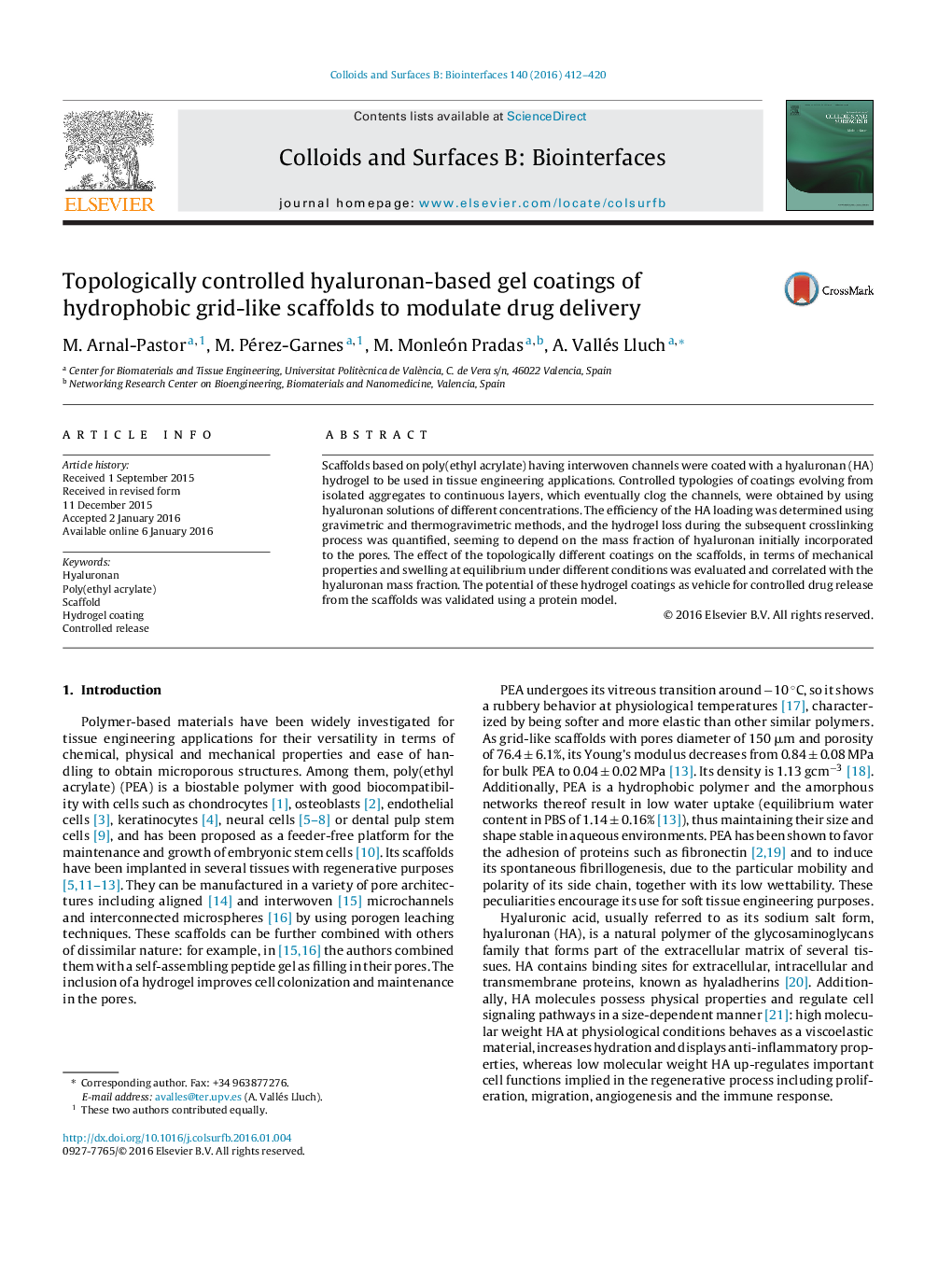| Article ID | Journal | Published Year | Pages | File Type |
|---|---|---|---|---|
| 599130 | Colloids and Surfaces B: Biointerfaces | 2016 | 9 Pages |
•Poly(ethyl acrylate) grid-like scaffolds were coated with hyaluronan (HA) gel.•Controlled coating typologies were obtained by varying the HA concentration.•Mechanical properties and swelling were correlated with the HA mass fraction.•Their potential as drug release vehicle was proven using a protein model.
Scaffolds based on poly(ethyl acrylate) having interwoven channels were coated with a hyaluronan (HA) hydrogel to be used in tissue engineering applications. Controlled typologies of coatings evolving from isolated aggregates to continuous layers, which eventually clog the channels, were obtained by using hyaluronan solutions of different concentrations. The efficiency of the HA loading was determined using gravimetric and thermogravimetric methods, and the hydrogel loss during the subsequent crosslinking process was quantified, seeming to depend on the mass fraction of hyaluronan initially incorporated to the pores. The effect of the topologically different coatings on the scaffolds, in terms of mechanical properties and swelling at equilibrium under different conditions was evaluated and correlated with the hyaluronan mass fraction. The potential of these hydrogel coatings as vehicle for controlled drug release from the scaffolds was validated using a protein model.
Graphical abstractFigure optionsDownload full-size imageDownload as PowerPoint slide
